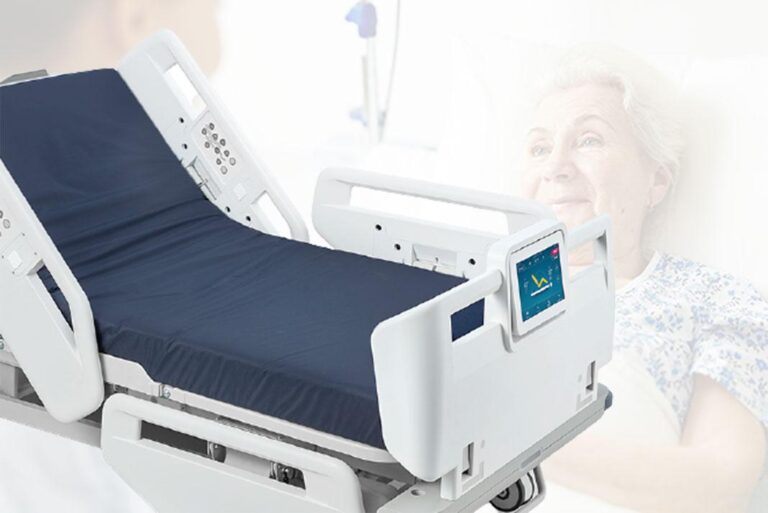In today’s fast-evolving healthcare landscape, patient comfort and efficient recovery are more critical than ever.One innovative solution gaining momentum is the use of smart beds—advanced healthcare technology designed to transform the patient experience. By seamlessly integrating features such as real-time monitoring,pressure relief,and customizable positioning,smart beds are not only enhancing comfort but also playing a vital role in accelerating recovery.This article explores how smart beds are redefining patient care and improving outcomes in medical settings.
Table of Contents
- Understanding the Technology Behind Smart Beds and Their Role in Healthcare
- Enhancing Patient Comfort Through Customizable Support and Pressure Relief
- Improving recovery Outcomes with Real-Time Monitoring and adaptive Adjustments
- Recommendations for Integrating Smart Beds into Patient Care Practices
- Final thoughts
Understanding the Technology Behind Smart Beds and Their Role in Healthcare
At the heart of smart beds lies a elegant integration of sensors, advanced materials, and IoT connectivity, designed to continuously monitor patient vital signs and adjust positioning automatically. These beds employ pressure-sensitive technology to detect movement and weight distribution,allowing for precise posture adjustments that reduce the risk of pressure ulcers and promote better circulation. Coupled with embedded temperature regulation systems and real-time data transmission, healthcare providers gain invaluable insights into patient comfort and physiological status without intrusive intervention.
the role of smart beds extends beyond mere comfort; their bright systems assist in accelerating recovery by supporting personalized care routines.Key features include:
- automated position changes to prevent bedsores and enhance respiratory function.
- Integrated alert systems that notify nurses of unusual patient movements or potential falls.
- data-driven analytics to tailor treatment plans based on continuous monitoring outcomes.
- Remote access capabilities enabling clinicians to make timely interventions remotely.
This fusion of technology with patient care enables a proactive approach in hospitals, nursing homes, and home healthcare settings, ultimately promoting faster recovery times and improving overall outcomes.
Enhancing Patient Comfort Through Customizable Support and Pressure Relief
Modern smart beds redefine the patient experience by offering tailored support systems that adapt to individual needs in real-time. These advanced beds come equipped with sensors that continuously monitor body pressure points, enabling dynamic adjustments to reduce discomfort and prevent pressure ulcers. By redistributing weight evenly, they alleviate strain on vulnerable areas such as the sacrum, heels, and shoulders, wich are most prone to developing bedsores. The customization options extend to various firmness levels and positioning angles, ensuring that patients maintain optimal blood circulation and spinal alignment throughout their stay.
Beyond pressure relief, smart beds enhance comfort through intuitive features, including:
- Automated lateral rotation: gently shifts patients to facilitate improved respiratory function and prevent muscle stiffness.
- Targeted zone support: customized cushioning that adapts to specific body contours for enhanced rest and relaxation.
- Responsive micro-adjustments: subtle shifts that prevent prolonged pressure buildup without disturbing patient rest.
These capabilities contribute to faster recovery times by minimizing patient discomfort, reducing the risk of complications, and promoting restorative sleep, making smart beds an essential component of modern healthcare environments.
Improving Recovery Outcomes with Real-Time Monitoring and Adaptive Adjustments
Integrating real-time monitoring technology within smart beds allows healthcare providers to track vital signs, movement patterns, and pressure points continuously. This dynamic stream of data enables an immediate response to any physiological changes or discomfort signals, reducing the risk of complications such as pressure ulcers or respiratory distress. by leveraging advanced sensors and AI algorithms, smart beds can automatically adjust positioning, support, and firmness to enhance circulation and relieve stress on vulnerable areas, promoting faster healing and greater patient comfort.
Beyond passive observation, these intelligent systems empower caregivers with actionable insights through customizable alerts and reports. Key benefits include:
- Personalized care adjustments that respond to the patient’s evolving needs in real time.
- Minimized intervention delays by identifying subtle changes before they escalate.
- Enhanced patient engagement through connected interfaces that encourage mobility and compliance with recovery protocols.
Such adaptive technology fundamentally transforms the recovery landscape, ensuring that patient wellbeing is optimized through precise, data-driven support.
Recommendations for Integrating Smart Beds into Patient Care Practices
To effectively integrate smart beds into patient care,healthcare facilities should prioritize staff training and ongoing education to maximize the technological benefits these beds offer. It is indeed essential that nurses and caregivers become proficient in utilizing features such as automatic position adjustments, pressure monitoring, and real-time data analytics to enhance patient comfort and reduce the risk of complications like pressure ulcers. Additionally, implementing standardized protocols that incorporate smart bed functionalities into daily care routines ensures consistent and effective use, fostering an habitat where technology complements clinical judgment seamlessly.
Collaboration between interdisciplinary teams plays a pivotal role in the triumphant adoption of smart beds. Engage clinical staff, IT specialists, and equipment vendors in regular feedback sessions to troubleshoot challenges and optimize bed settings tailored to individual patient needs. Consider these key recommendations:
- customizable alert systems to promptly notify caregivers of mobility or vital sign changes.
- Integration with electronic health records (EHRs) for streamlined data access and better care planning.
- Patient-centered design adjustments that promote autonomy and comfort during recovery.
- Routine maintenance and technology updates to sustain performance and reliability.
by embedding smart beds thoughtfully into existing care practices, healthcare providers can revolutionize patient recovery experiences and set new standards in comfort and safety.
Final Thoughts
smart beds are revolutionizing patient care by seamlessly blending technology with comfort. Their ability to adapt to individual needs not only enhances patient comfort but also plays a crucial role in accelerating recovery and improving overall health outcomes. As healthcare continues to evolve, integrating smart bed technology stands out as a promising step toward more personalized, efficient, and compassionate patient care. Embracing these innovations today sets the stage for a healthier tomorrow.

